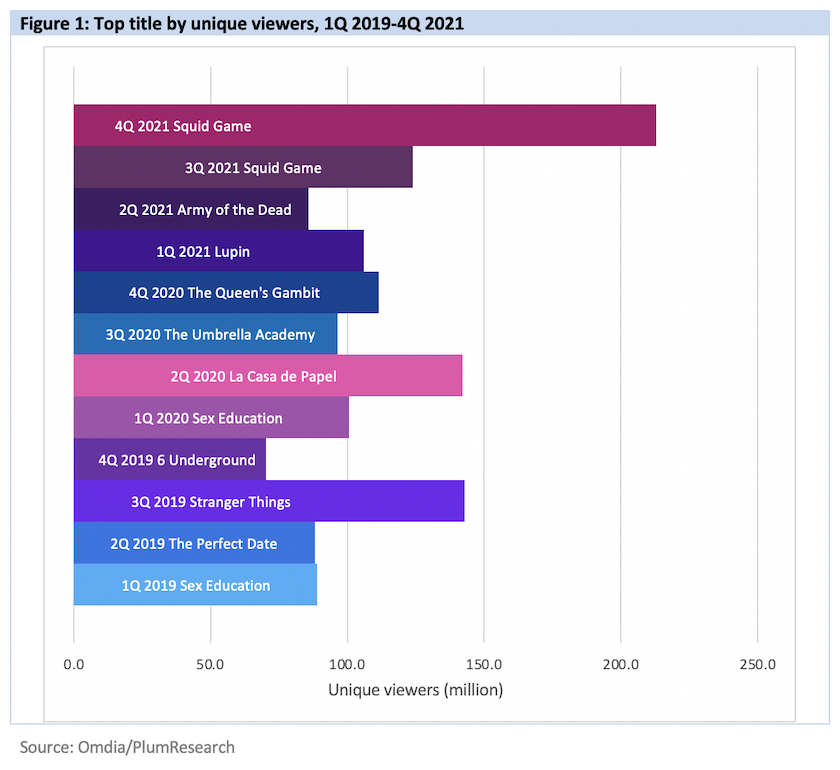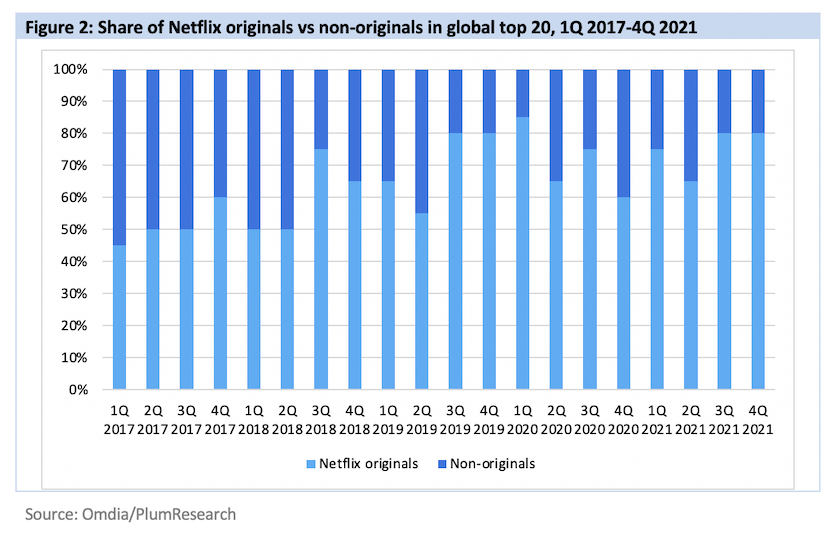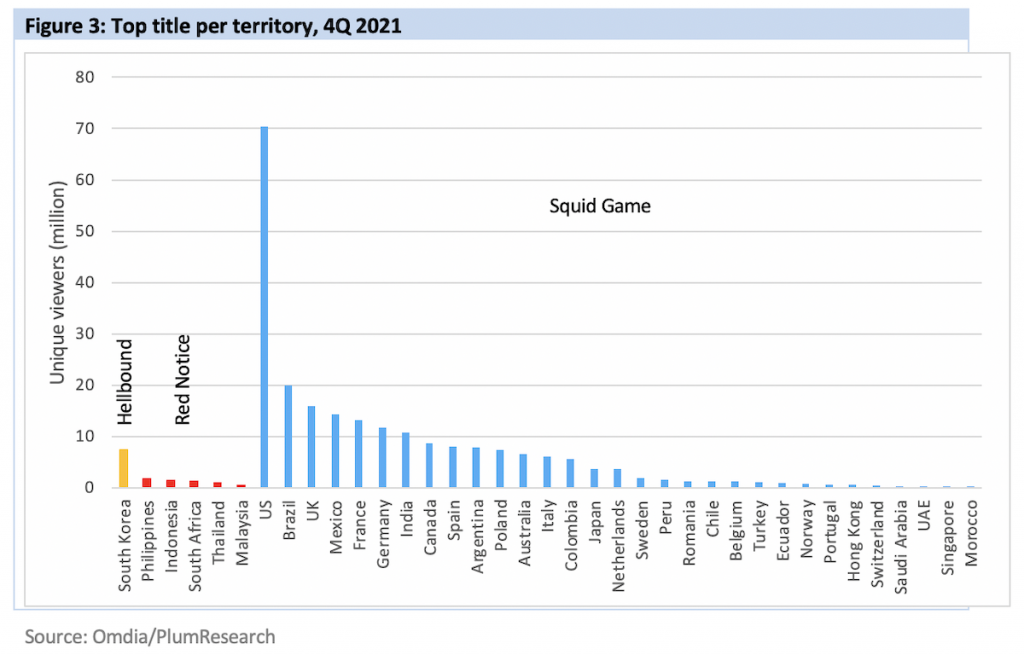TBI Tech & Analysis: Exploring the ‘Squid Game’ effect on Netflix’s global operations
Netflix is facing more competition than ever before from global streamers and regional players, but its well developed local originals strategy gives it a key advantage. Tim Westcott, senior principal analyst at research powerhouse Omdia, reflects on 2021 breakout Squid Game’s success and what it means for 2022.
New data from Omdia partner PlumResearch, estimating unique views for Netflix titles across 37 territories worldwide, highlights the huge value to the streaming platform of a global breakout hit.
Korean series Squid Game, the streamer’s top title in Q3 last year, performed even more strongly in the fourth quarter, setting a new viewing record. With the studios moving their key content to their own platforms and non-US subscribers becoming an ever-more important part of its revenue mix, Netflix is continuing to look for content with global appeal.
Delving into Squid dominance
Squid Game’s success has been well documented but it is worth reiterating just how popular the show has proven. It was the most-viewed title across the world in the fourth quarter of 2021, with an aggregate total of 212.9 million unique viewers in 37 territories, according to data from PlumResearch.
The drama also topped the global top 20 in Q3 after its launch on Netflix in September with 123.9 million unique viewers. The previous most-viewed title was La Casa De Papel (Money Heist) with 142 million viewers in Q2 of 2020, followed by The Queen’s Gambit with 111 million in Q4 of 2020, and Stranger Things in Q4 of 2017 with 110 million.
Squid Game was also the most viewed title in 31 of the 37 territories surveyed in Q4 of 2021. The big-budget action movie Red Notice was number one in five countries (Indonesia, Malaysia, the Philippines, Thailand and South Africa), while Hellbound was number one in South Korea.
Some 70 million viewers streamed Squid Game in the US, the SVOD provider’s biggest market, with Brazil registering 20 million viewers, the UK 16 million and Mexico 14.3 million.
Balancing originals & acquisitions
In Q4 of 2021, 16 of the top 20 titles were Netflix originals, the same as the quarter before and an indication that the streamer’s heavy investment in exclusive content – in part a defence against studios like Disney and Warner Bros. moving their content to their own services – is being rewarded.
In the first few quarters captured by PlumResearch, there was a different story, with the split being more or less equal. In Q1 of 2017, nine of the top 20 titles worldwide were originals.
More exclusive, break-out content not only creates lots of PR buzz for Netflix, but also pays off in attracting new subscribers and keeping existing customers from churning. Admittedly, widespread coverage of the Squid Game phenomenon was not enough to offset year-end results that were widely seen as disappointing, with 8.3 million subscribers added in 4Q, fewer than the company’s own forecast. The sensitivity of investors to anything less than a barnstorming quarter is part of a new reality for Netflix that competition is steadily increasing.
It should also be noted that acquisitions still play a big part in the Netflix offering. Movies still perform well, especially in the US, where 21 Jump Street and Titanic did well in 4Q.
Series reruns like Friends, Rick And Morty and Brooklyn Nine Nine still garner big audiences in English-speaking territories like Australia, Canada and the UK in particular. In the US, Netflix signed a deal with Sony Pictures that will give it the exclusive pay one window for the studio’s output, starting this year.
Day & date with ease
By investing in its own content, Netflix is also able to launch a new title on the same day around the world – something which was not unprecedented around the world, but was quite rare given the territory-by-territory model in which content is sold.
It also means that – whether by design or just a fortuitous side-effect – consumers are far more likely to sample foreign content than they were in the linear world.
Squid Game is just the latest in a series of breakout hits in languages other than English. La Casa De Papel (filmed in Spanish but available in dubbed and subtitled versions) has been one of the streamer’s biggest hits, while French series Lupin was number one in Q1 of 2021.
Certainly, part of the reason for investing in non-US content is to drive take up of Netflix around the world by increasing localisation. At year-end 2021, two-thirds of the platform’s paying subscriber bases was outside the US and Canada. And while domestic subscribers grew by a mere 2% year-on-year, Asia Pacific was up 28%, EMEA was up 11% and Latin America up 6%.
PlumResearch data shows that in countries like India, the Philippines and South Korea, locally-made content dominates the top views (in fact, the same goes for the US). It also helps that producing outside Hollywood can work out a lot cheaper: series one of Squid Game reportedly cost $21.4m, compared to $200m for Red Notice.
Tim Westcott is senior principal analyst for Digital Content & Channels at Omdia, which – like TBI – is part of Informa.







